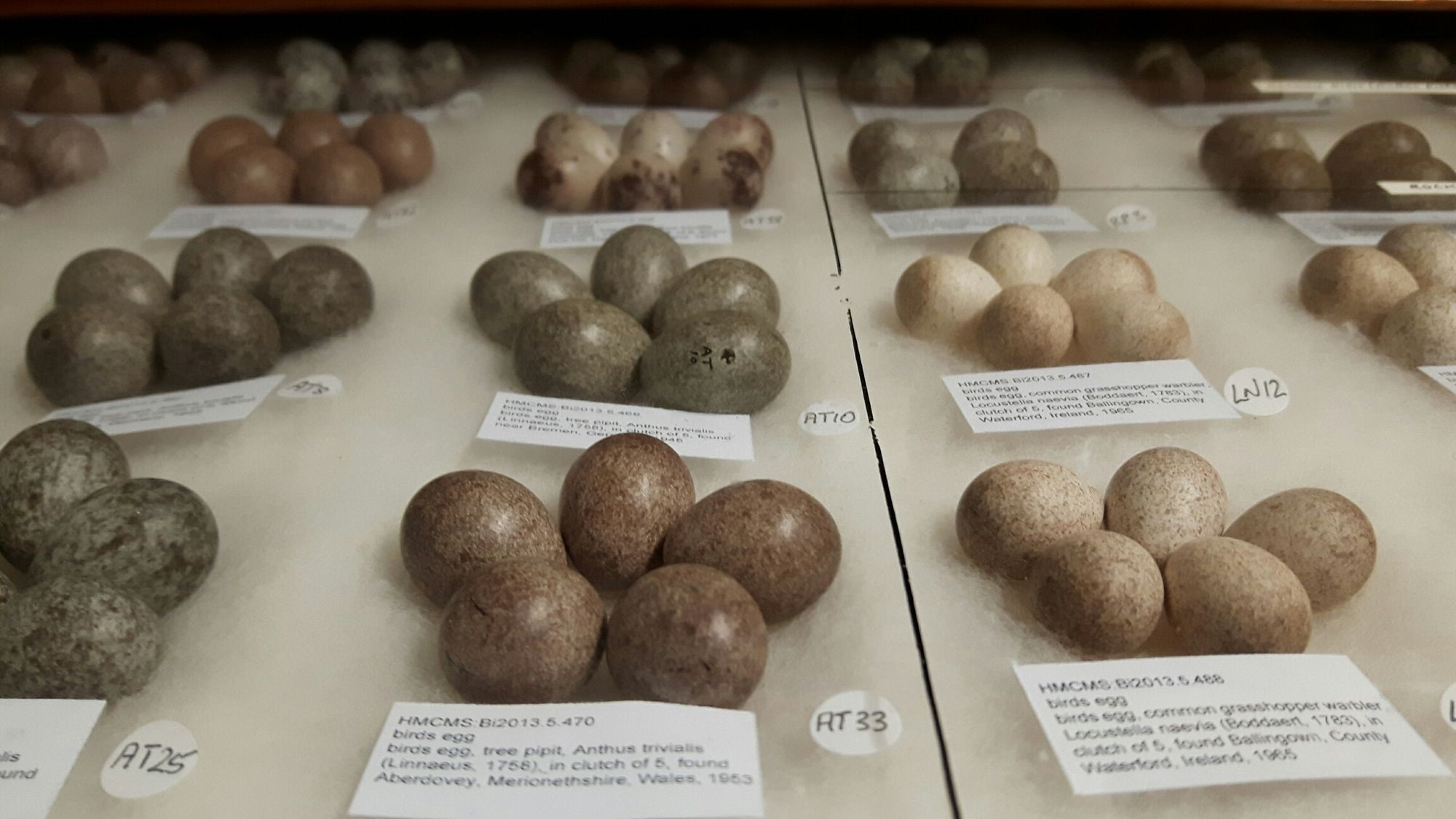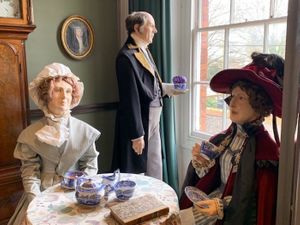One of the objects that is associated with the celebration of Easter is the egg, be it as a representation of re-birth and new life, or a tasty chocolate treat to be hunted down on Easter Sunday. But it was not that long ago that the searching for eggs was regularly carried out for entirely different reasons.

The collecting of birds’ eggs was once a popular pastime among professional and amateur Oologists and school children alike. Motivated by a desire to identify and classify, there seemed little thought about the impact it was having on the birds. Indeed it was probably seen as a worthy pursuit, as it combined science with being active outside. Times have changed and the collecting of birds’ eggs is now illegal, but we have been left with a legacy that can be, and deserves to be, utilised as a source of education. Hampshire Cultural Trust holds a large collection of eggs in the Natural Sciences collection that are available for that purpose.

So what can we learn from the eggs that we hold in the collection? At the most basic level, they can be used to illustrate what the eggs of individual species look like. But more can learnt from them. When eggs were originally collected, information was also recorded, such as where the eggs were found, how many were in the cluster and the species of the bird. Over a period of time, that information, together with the recording of the physical attributes of the egg, such as thickness of shell and colour, can be used to investigate how species are faring in the face of issues such as changes in land use and pollution.

A large collection of eggs (1377 clutches/single eggs) cared for by Hampshire Cultural Trust is the Simson collection. The collection was put together over a period of years by Brigadier E.C.L. Simson. As well as recording the all-important details of the eggs, he also stored and presented many of them in a natural manner in nests of feathers. The science aside, they are works of art in themselves.

The collection of eggs Hampshire Cultural Trust holds were collected historically and the collection is no longer added to.
If you have enjoyed Culture on Call and you are able to make a donation, please click the link below. Any support you can give will help us keep communities connected to culture in these difficult times.





